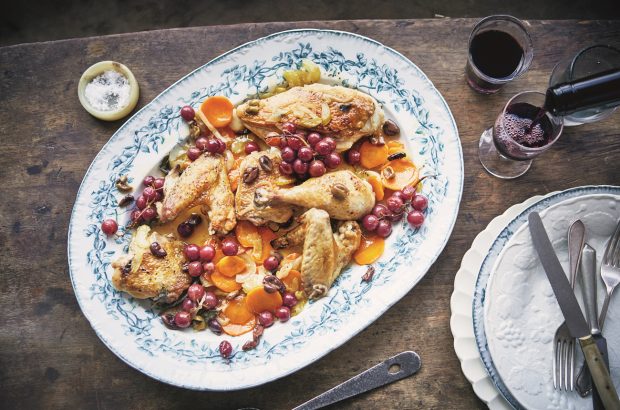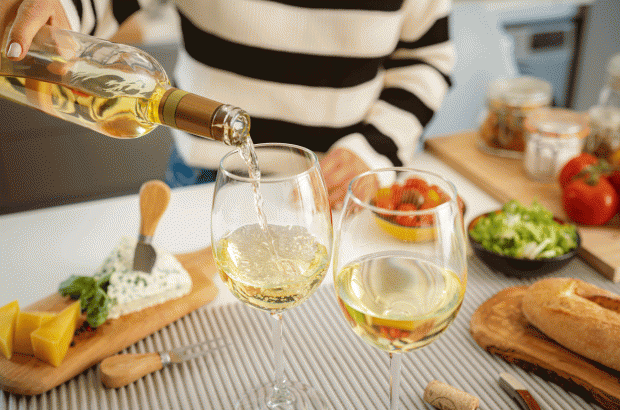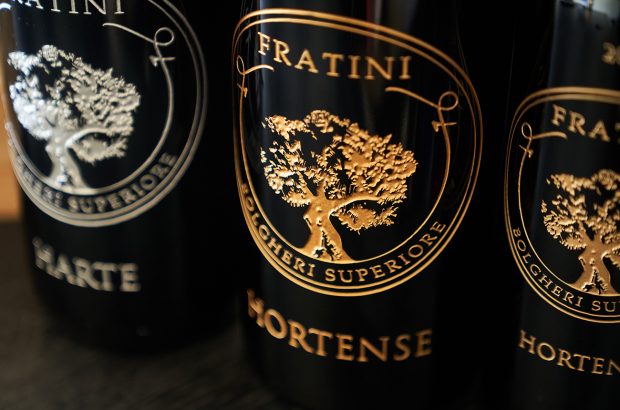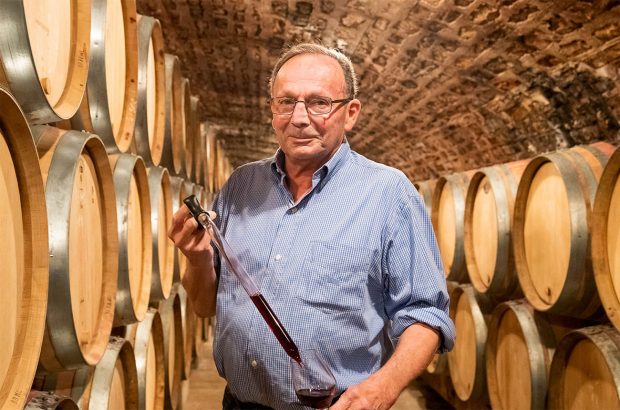It would make a great Who wants to be a Millionaire question. For £32 000, what is Touriga Nacional? Bet your bottom dollar many contestants would go for the Portuguese football team option – it wouldn’t get them up to the next level, but they would at least be in the right country. Only the wine buff would confidently press the ‘Portuguese grapes’ button.
Unlike the modern stars of Cabernet Sauvignon and Chardonnay that excel as solo artists, Touriga Nacional belongs to a Portuguese team of stay-at-home, indigenous varietals that are happiest when blended, be that in table wines or in port. Hence, it rarely adorns a label.
First white ‘Cabernet Sauvignon’ released
But things are changing. Portuguese red table wines occupy ever widening sections of our wine shelves and as interest in all things vinous gathers pace TN, as it’s affectionately known, is fast becoming Portugal’s flagship varietal. Douro winemakers who have traditionally blended Touriga are now promoting solo performances.
Like many top Douro men, Quinta da Gaivosa’s winemaker Domingos Alves de Sousa, long an opponent of the New World varietal route, is changing his music, if not his tune. ‘I still believe that the Douro favours blends, as they are rich and more complex, but I’ll follow the fashion as long as quality prevails,’ he smiles.
Before somebody from the back shouts that the Douro predominantly produces port, it’s interesting to note that more than half the Valley’s grapes go to still red table wines. To prove a point, statistics show thatin 1996 only around 40% were allocated to port production.
Winemaker João Nicolau d’Almeida at port and red wine producers Ramos Pinto has been experimenting since 1976 with grape varieties, linking them to different terracing methods, microclimates, soils and vineyard altitude. These years of painstaking appraisal have shown something that producers suspected all along. ‘The five traditional port grape varieties of Touriga Nacional, Tinta Francesa, Cão, Tinta Roriz (a.k.a Tempranillo) and Barroca have proved to be the best,’ says Almeida. The results have not sent Ramos Pinto rushing down the single varietal route, but its celebrated Duas Quinta red nonetheless benefits from 70% of powerful Touriga Nacional topped up with 30% Tinta Barroca.
To the grape buff, Touriga Nacional is the king of the Douro, but this accolade is somewhat misleading. Yes, it is generally agreed to be the finest Douro variety and an all-important ingredient to top vintage port, not to mention the best reds, but amazingly it’s not as widely planted as many believe. ‘At present, TN accounts for only around two percent of grapes in the Douro Valley,’ says Noval’s managing director Christian Seely. But like Jekyll and Hyde, Touriga Nacional has two faces.
The smiling side of TN’s character is that with enormous reserves of black fruits and massive mouth-filling tannins, it’s a must for classic vintage port. ‘It provides the body, depth and intensity of fruit, and contributes significantly to the stamina and longevity of the wine,’ explains Taylor’s managing director, Adrian Bridge.
Now for the darker side of TN’s character. The problems start in thevineyard. Firstly, the grape is an incredibly low yielder, often giving less than half a litre of juice per vine. The vines are difficult to cultivate and although the yield is low the plant’s vigour is very high. ‘Unlike the upright Cabernet Sauvignon it has a lax, drooping posture making it a pain to train,’ adds Bridge.
Regardless of these horror stories, Touriga is a consistently brilliant quality performer in the best vintages and many Quintas are increasing their plantings. ‘We’ve now embarked on a 50% Touriga vineyard programme at Noval,’ confides Seely. For the enlightened producer, gone are the traditional Douro ‘blocks’, which included many varieties planted willy-nilly. Now vineyard blocks are given over to single varieties, to facilitate blending by design rather than chance.
‘It needs to be sited on shallow, stoney, relatively infertile soils,’ says Taylor’s Nick Heath. ‘It also likes lower sites in the full sun,’ observes Seely. Full sun in the Douro means the summer mercury pushing the 40˚C mark so it’s obvious that the small berries can tan without sun oil on their way to producing their youthful mouth puckering tannins!
The strictly classified Douro vineyard system is essentially geared to fortified and not table wines, with the top A and B sites consistently yielding the best port fruit. The neat formulae can be turned on their head when it comes to table wines. ‘Often it’s the lower rated vineyards with their cool damp aspect that are best suited to reds,’ says Cockburn’s PR manager Antonio Graca. The aristocratic Touriga, however, goes its own way and favours the top sites for port and still wine alike.
Understandably, in the winery TN’s high potential fruit and mouth-coating tannins require careful control. But if that’s not enough, in aromatic terms the variety is a very late developer. Much of the heady, big fruit opulence of the best port vintages is attributed to TN but you need patience. ‘Its complexity usually takes many years to develop, particularly in a bottle-aged wine,’ explains Bridge. Such ageing problems are not only restricted to fortified wines. Ramos Pinto releases Duas Quintas three to four years after the harvest to achieve balance, for not even the addition of the more subtle Barroca can completely restrain TN. If you’re thinking that Touriga is only grown in the sizzling Douro, I’ll tell you a story. Calling all wine drinkers who go back beyond 1990. Do you remember those excellent Dão reds with a three quid price tag that graced our shelves about 15 years ago? To the disgust of a growing fan club, the wine disappeared after six months. The substitute had the same label but the wine was different. I asked Mañuel Olivera of the Quinta dos Roques about the wines.
‘Those better wines were probably made predominantly from Touriga Nacional, the later wines from the high-yielding Baga, a variety that isn’t best suited to Dão but one that obviously fitted that high volume very well,’ he explains.
The variety was recorded as a main player ‘for colour’ way back in the 1860s and today’s Dão DO demands that a minimum of 20% of Touriga is included in all reds. If Barroca is its partner at Ramos Pinto, Alvaro Castro at Quinta de Saes goes with Roriz. ‘We’ve found that Touriga Nacional and Tinta Roriz perform best on the Dão’s granite soils and we’ve replanted these two to replace other varieties,’ he says. Touriga obviously takes its tannic edge qualities on its travels, for Castro also extols the importance of control. ‘Control of the tannins creates the different styles and is the key to producing wines that can be drunk on release as well as having the capacity to age,’ he explains.
In the baking southern state of Alentejo, David Baverstock of Esporão keeps Touriga out of the frame. ‘I believe in blends. Look out for Trincadeira, Aragonês and Touriga Nacional: it’s the blend of the future,’ he says. He also appreciates that Touriga Nacional and Cabernet Sauvignon have a common factor – it only needs a small dollop of either to lift a blend.
Touriga may be a permanent resident around Portugal but it’s debatable whether it still has a passport. It’s respected in Australia and South Africa for its fortified wine qualities, but its global red wine potential has yet to be discovered. What’s the bet an Aussie winemaker discovers its powers in a warm French region. Maybe we’ll soon see Touriga D’Oc. Don’t forget it was my idea!















